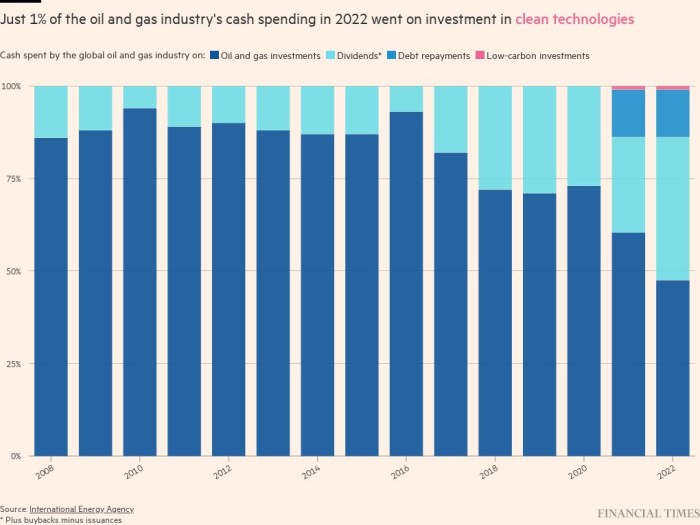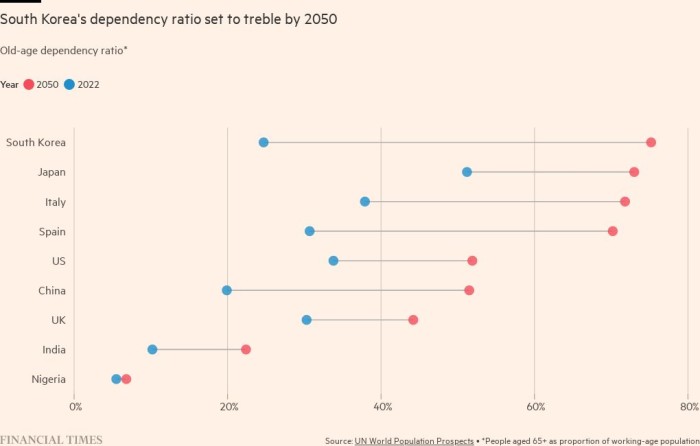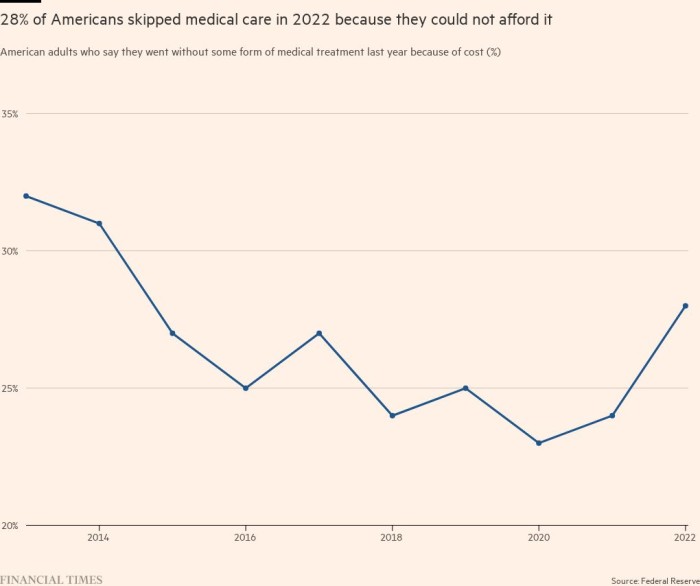Oil and gas companies’ returns in the form of dividends and share buybacks hit a 15-year high in 2022 — accounting for 39 per cent of spending, according to the International Energy Agency.
Concerns about interest rates and long-term demand for fossil fuels meant debt repayments absorbed a further 13 per cent.

Many fossil fuel companies had an exceptionally profitable 2022, with the rise in energy prices driving oil and gas producers’ net income to $4tn, more than double the average for recent years.
Despite this windfall, the oil and gas industry spent just 1 per cent of its cash investing in clean energy.
This may be set to change in 2023, with policy incentives such as the Inflation Reduction Act in the US already encouraging investment in clean energy infrastructure.
And for the first time in at least 15 years, less than half of the cash available was invested into new oil and gas supplies.
Ella Hollowood
Our other charts of the week

Foreign direct investment in the semiconductor industry hit an all-time high last year, as governments offered companies massive incentives to build local manufacturing capacity.
Roughly $175bn has been pledged to cross-border investments across the sector since 2021, more than the combined total of the previous decade, according to fDi Markets, an FT-owned greenfield investment database.
The position of microchips at the centre of the modern economy has made them increasingly fraught with geopolitical risk. Governments have imposed trade restrictions, banned chip-related products and offered companies subsidies for investment in an attempt to develop and protect their local semiconductor industries at the expense of rivals.
The world’s top destination country for semiconductors foreign investment between 2003 and 2020 was China, which attracted almost $100bn worth of projects, double that of the US over the same period. In contrast, the US has attracted almost eight times as much as China since 2021.
Alex Irwin-Hunt

Japan is often in the spotlight for its declining birth rate, but South Korea’s ageing population will be an even larger economic burden by 2050, according to the UN World Population Prospects.
South Korea’s dependency ratio — the number of people aged 65 and over as proportion of its working-age population — is expected to treble to 75 per cent during the next three decades.
In southern Europe, ageing populations are also a growing concern. Italy is expected to have a dependency ratio of 72 per cent by 2050, with its birth rate at a record low last year.
Government credit ratings are already being affected by ageing populations. In January, rating agency S&P warned that, without action, around half of the world’s largest economies will by downgraded to junk status by 2060.
Amy Borrett

The flagship UN climate summits have more than doubled during the past five years, according to UN data. The last two conferences were the largest since COP21 in 2015, when the Paris Agreement was adopted.
Participation in this year’s event in Dubai will be closely watched following the controversial appointment of oil executive Sultan al-Jaber as COP28 president.
More than 130 lawmakers from the US Congress and the European parliament called on the UN last month to remove al-Jaber as president and warned of the undue influence of the fossil fuel industry on the conference.
Oliver Hawkins

More than a quarter of Americans had to forgo medical care last year due to cost, according to a recent survey from the Federal Reserve.
After historical lows seen during the Covid-19 pandemic, 28 per cent of Americans said they skipped treatment in 2022 — the highest percentage since 2014. Dental care was the most skipped treatment, followed by a visit to a doctor.
The US central bank said the trend may be related to the rising cost of living as medical care is “an area where people can save money by cutting back on spending”. Many reported that their financial wellbeing had deteriorated in 2022.
The report also highlights significant disparities between the insured and the uninsured. Even though 91 per cent of US adults had insurance in 2022, many still struggled with out-of-pocket expenses, resulting in 26 per cent of insured individuals skipping care. The percentage was higher for those without insurance, reaching 42 per cent.
Sarah Andersen
Welcome to Datawatch — regular readers of the print edition of the Financial Times might recognise it from its weekday home on the front page.
Do you have thoughts on any of the charts featured this week — or any other data that has caught your eye in the past seven days? Let us know in the comments.
Keep up to date with the latest visual and data journalism from the Financial Times:
-
Data Points. The weekly column from the FT’s chief data reporter John Burn-Murdoch.
-
Climate Graphic of the Week is published every week on our Climate Capital hub page.
-
Sign up to The Climate Graphic: Explained newsletter, free for FT subscribers. Sent out every Sunday, a behind-the-scenes look at the most topical climate data of the week from our specialist climate reporting and data visualisation team.
-
Follow the Financial Times on Instagram for charts and visuals from significant stories.
-
Follow FT Data on Twitter for news graphics and data-driven stories from across the FT.
Stay connected with us on social media platform for instant update click here to join our Twitter, & Facebook
We are now on Telegram. Click here to join our channel (@TechiUpdate) and stay updated with the latest Technology headlines.
For all the latest Business News Click Here
For the latest news and updates, follow us on Google News.
